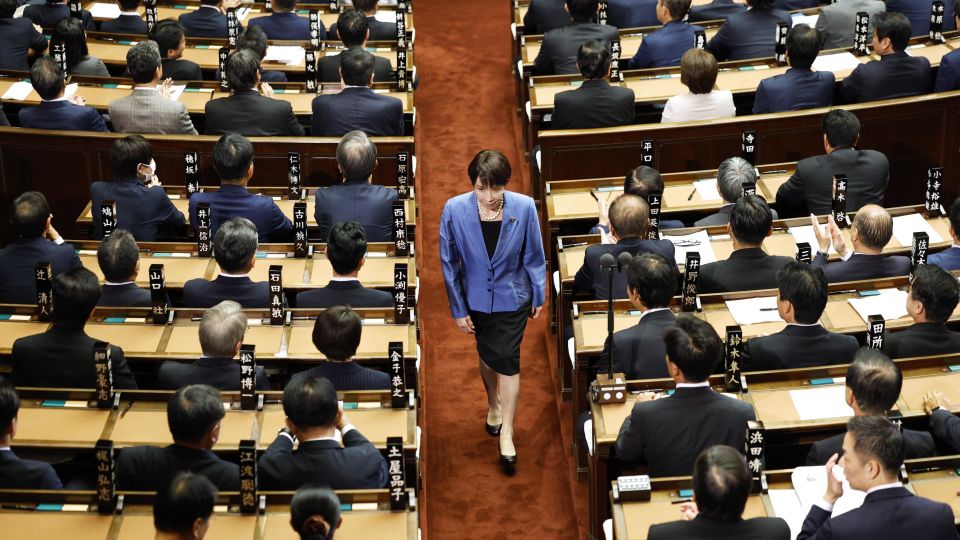Staunch conservative Sanae Takaichi was elected Japan’s first female prime minister by the country’s parliament on Tuesday, in a landmark moment for the historically patriarchal country where both politics and workplaces are dominated by older men.
Takaichi steps into the role as Japan faces mounting economic woes and a fractured and deadlocked politics, and just days before US President Donald Trump is scheduled to visit.
Her deeply conservative views have alarmed some centrist party members. For instance, she supports revising Japan’s pacifist constitution and often visits a controversial war shrine that includes the names of those convicted of war crimes during World War II.
She also opposes same-sex marriage, and a growing movement to allow married couples to use separate surnames.
Some of these stances, such as her hawkish views on China, could complicate Japan’s regional relationships. And within Japan, some worry about her economic proposals – to spend big and cut taxes – as the country struggles with sky-high inflation and living costs.
Liberal Democratic Party (LDP) President Sanae Takaichi stands up to acknowledge the applause after she was selected as Japan’s new prime minister during an extraordinary session of the lower house of parliament in Tokyo on Tuesday. – Philip Fong/AFP/Getty Images
She was elected leader of the ruling Liberal Democratic Party (which, despite its name, is conservative) earlier in October, beating more moderate candidates. It suggested a rightward turn for the scandal-hit LDP, which suffered bruising losses in the last two parliamentary elections after discontented voters switched to new far-right parties.
She was elected prime minister by both houses of parliament – but now, she’ll have to answer to the populace of 120 million Japanese. Tackling the high price of goods will be one of her first challenges; for instance, the price of rice, a staple food in Japan, has almost doubled from last year.
There’s also the ever-present headache of Japan’s declining birthrate, shrinking workforce and swelling elderly population. There’s a growing public backlash against mass immigration. And then there is the Trump administration and its whiplash tariffs, which shook Asian economies earlier this year.
There’s also the immense challenge of winning back public trust, with the LDP experiencing its biggest crisis in decades and being stripped of its parliamentary majority under former Prime Minister Shigeru Ishiba after a political slush fund scandal.
Simply being elected as the leader of the ruling party would usually have been enough to secure the premiership. But Takaichi’s path to power was complicated; besides losing its majority, the LDP also lost its coalition partner of 26 years, Komeito, which terminated the alliance when she won the leadership race.
That left the LDP scrambling to find a new coalition partner – and it ultimately joined forces with the opposition Nippon Ishin (Japan Innovation Party) ahead of Tuesday’s vote.
Nippon Ishin shares some of Takaichi’s conservative values – like tougher immigration controls – and have secured a commitment to cut the number of lawmakers by 10% as part of its coalition deal. But the party has other desires too, like making Osaka, its hometown power base, Japan’s second capital city.
Takaichi’s party hopes she can be the answer to their recent unpopularity. But with a revolving door of prime ministers that has cycled through four leaders in the last five years, Japan’s so-called ‘Iron Lady’ will need to deliver results quickly to stay in power.
For more CNN news and newsletters create an account at CNN.com

